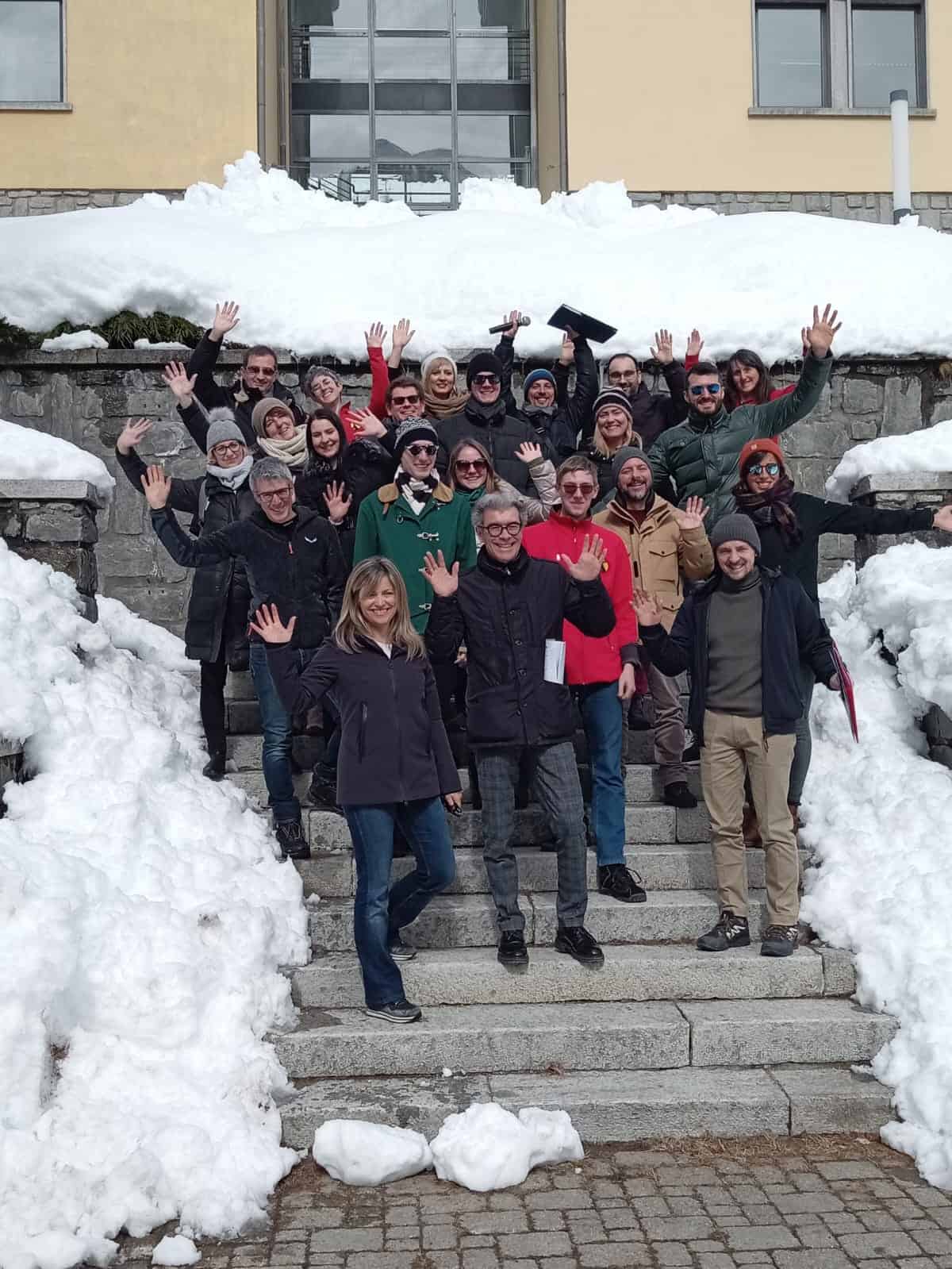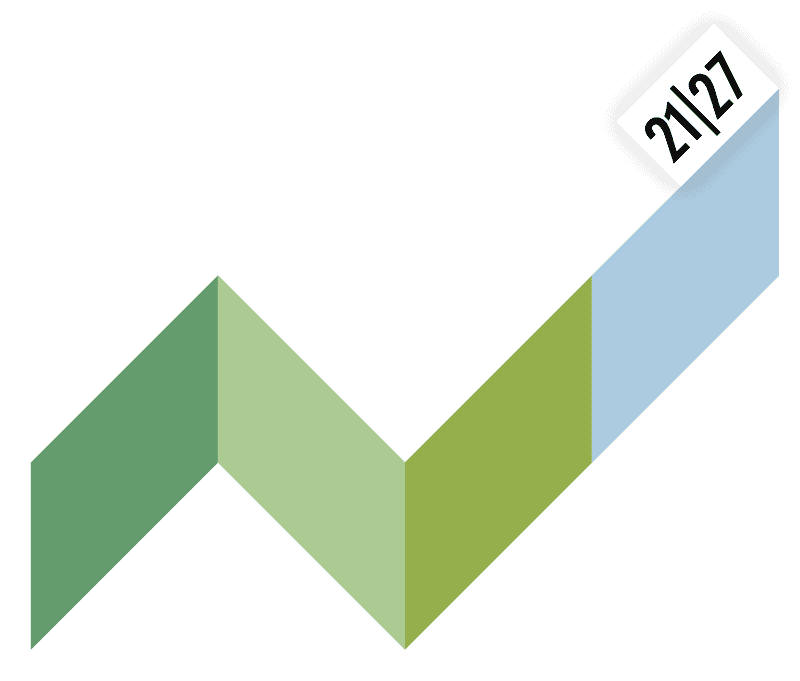The third meeting of the Interreg Alpine Space SmartCommUnity project took place in Valle d’Aosta from 5 to 7 March. The objective was to deepen the methodologies and learn about good territorial practices dedicated to the creation of “smart”, sustainable and resilient communities in the Alps thanks to the use of digital technologies, with particular reference to the Gran Paradiso and Mont Avic test areas.
The project partnership, made up of 12 partners from 6 states (Austria, Italy, France, Germany, Slovenia and Switzerland) met the stakeholders of the test areas in Valle d’Aosta Region, young high school students participating in the Montagna 4.0 project, members of the EUSALP Youth Council and representatives of the European projects More than a village (Central Europe) and Smart ERA (Horizon Europe) to dialogue on views and ideas for smarter, more inclusive, attractive rural and mountain communities. The school Youth from the “Montagna 4.0 – FUTURe ALPS” project, which includes 250 students from Valtellina (Lombardia Region), Valle d’Aosta Region, Trentino (Trentino Alto Adige Region) and Carnia (Friuli Venezia Giulia Region), presented the fruits of their training path in contact with local entrepreneurs dedicated to the themes of environmental sustainability, tourism, innovation in the mountain regions. Members of the three European projects spoke with the young people with questions, suggestions and “encouragements” to continue activities undertaken.
The three projects’ partners focused on the smart community definition at European level as a common starting point to elaborate new methodologies, best practices and policy recommendations through also the connection with other Macro-regional strategies. Thanks to the workshop “Introduction to “systemic reading” for in-depth understanding of case studies and good practices” partners explored the most effective methodologies and approaches to achieve the project objectives.
The second day was dedicated to discovering the good practices implemented by Fondation Grand Paradis thanks to interregional cooperation projects, in the Gran Paradiso National Park, chosen as a Lighthouse Area by the Valle d’Aosta Autonomous Region. Luisa Vuillermoz, director of the Fondation Grand Paradis, presented to the partnership innovative solutions applied to sustainable tourism: among the good practices presented, the Visit Gran Paradiso app accompanied the group on a visit to the Villaggio Minatori in Cogne and to the frozen waterfalls of Lillaz. The partners were able to get to know the Gran Paradiso Film Festival, in particular the GPFF Online section, they experienced the virtual ascent to the Gran Paradiso with the “Gran Paradiso VR – The experience of nature” station and they tested the e-MTBs of the “ITER” and “Rêve” projects for sustainable mobility. The Foundation, via the SmartCommUnity project, intends to reach new objectives through digital tools: other virtual experiences other virtual experiences to raise awareness of the natural beauty of the Gran Paradiso Park and a digital assistant creation, using artificial intelligence, which can guarantee tourism promotion and environmental awareness. Moreover, all project partners presented their activities in Lighthouse test areas and Follower Test Areas aimed to smart transition with innovative methodologies and approaches that involve stakeholders to make them protagonists of this change. Rocco Scolozzi (partner-founder of the startup -skopìa Anticipation Services, member of the Association of Professional Futurists and of the System Dynamics Society) involved the Consortium in a participative workshop on megatrends that helped partners to focus on possible future scenarios.
On the third day partners visited the Mont Avic Natural Park and the Megalithic Area of Saint-Martin-de-Corléans. Daniele Stellin, director of the Mont Avic regional park, described the technologies used in the park and the ongoing initiatives also through the support of audio guide and QR code on site. Accompanied by a park ranger, the participants tested the iNaturalist app and the sensors used to detect the numerous passages. The Visitor Center of the Mont Avic Park in Covarey hosted the latest project workshops aimed at supporting the development of innovative initiatives in the pilot areas of the project. Finally, in the Megalithic Area, the group was able to try the new virtual reality viewers to go back up to 4000 years in time thanks to digital technologies.
Luciano Caveri, Councilor for European Policies, Innovation, PNRR and National Mountain Policies for the Valle d’Aosta Region: “Mountains suffer from depopulation dynamics and climate change: we must not be catastrophists, but we must respond with alliances, creating collaborations across the entire Alpine Space thanks to opportunities offered by the various European programs and the synergies created through EUSALP, the European strategy for the Alpine macro-region. Valle d’Aosta Region has always been profoundly European and enthusiastically welcomes SmartCommUnity project which looks at all the future opportunities offered by digitalization as an unmissable development lever opportunity to promote the territorial and social cohesion, supporting local communities towards a smart community approach”.
Gianluca Lentini, researcher at Poliedra, Consortium of the Polytechnic of Milan (IT) – SmartCommUnity project partner: “Over the last few years, I have worked a lot on the topic of rural mountain communities and as a facilitator of their digital transition. During the SmartCommUnity project we arrived at two definitions of what a “smart community” is. A very complex, somewhat academic definition, which says that smart communities are communities in rural areas that are proud of their identity, their craftsmanship, their innovation capabilities and take charge of a holistic transition of the territory by also use of all digital technologies. A simpler definition that we have put at the service of our local communities, of our test areas, simply says that a smart community is a conscious community that wants to improve its existence by making use of all the information, all the communication methods that also innovative technologies make available. We have naturally translated these two definitions, the more complex one and the less complex one, into the languages of the Alpine space and now we have also extended these definitions to serve two other European projects. A Central Europe project called More than a village and a Horizon Europe project called Smart Era.”
Niklas Graf, member of the EUSALP European Youth Council and representative for the country of Austria:”European countries should learn from themselves, so it shouldn’t be a competition. Who’s the best one, who’s the fastest one, in terms of digitalisation. So, countries should get together, talk about they’re stronger countries, they’re less strong countries in terms of digitalization, and they should help everyone to get forward in this topic. And I think it’s also very important, and that’s what I’m going to say as a youth council, that you bring young brains into the digitalisation process, because it’s for the future and it is for the young people. We’re going to have the advantages in the future if the digitalisation goes forward in the one space”.



